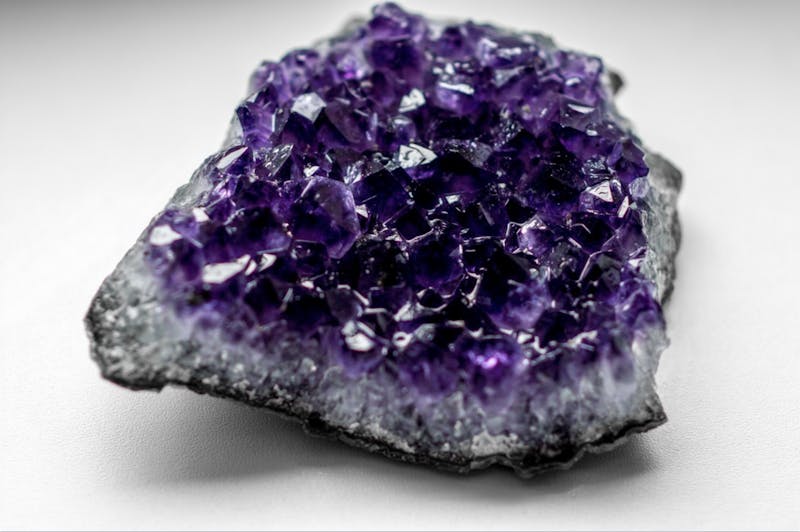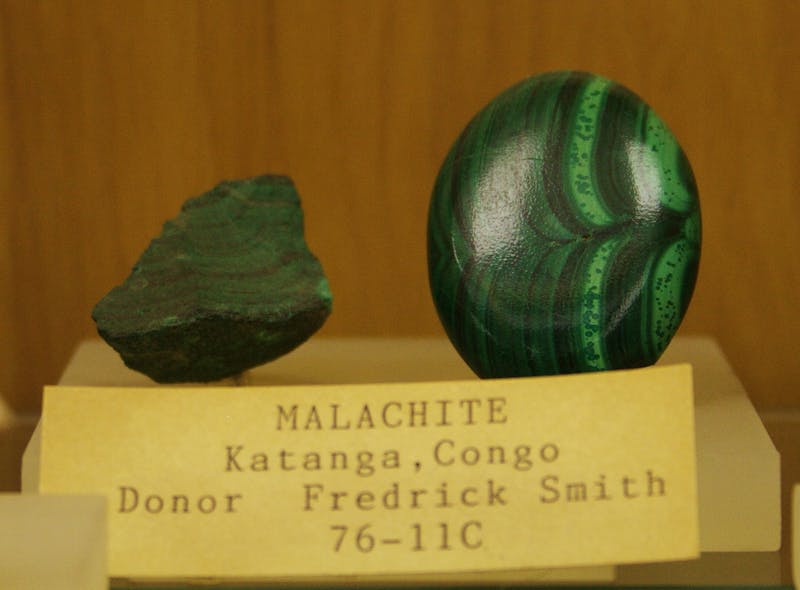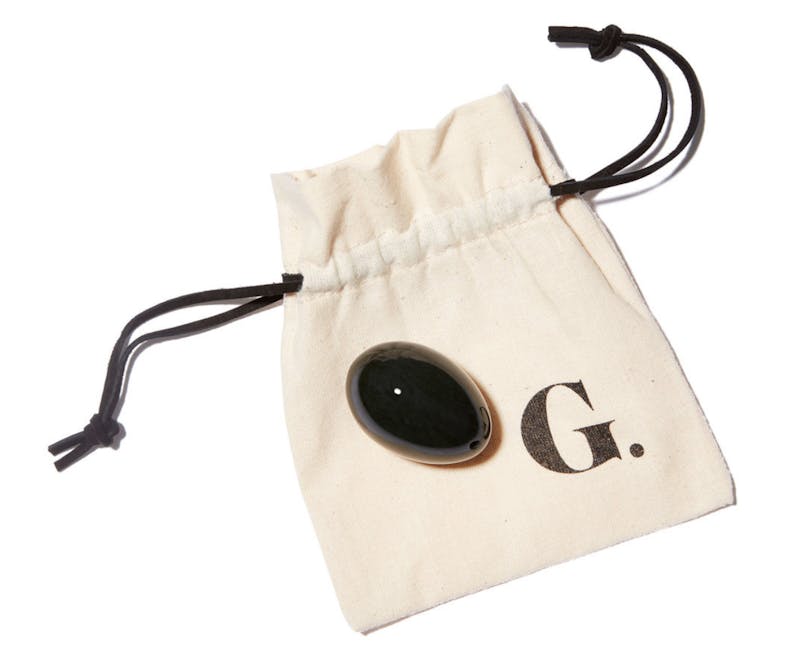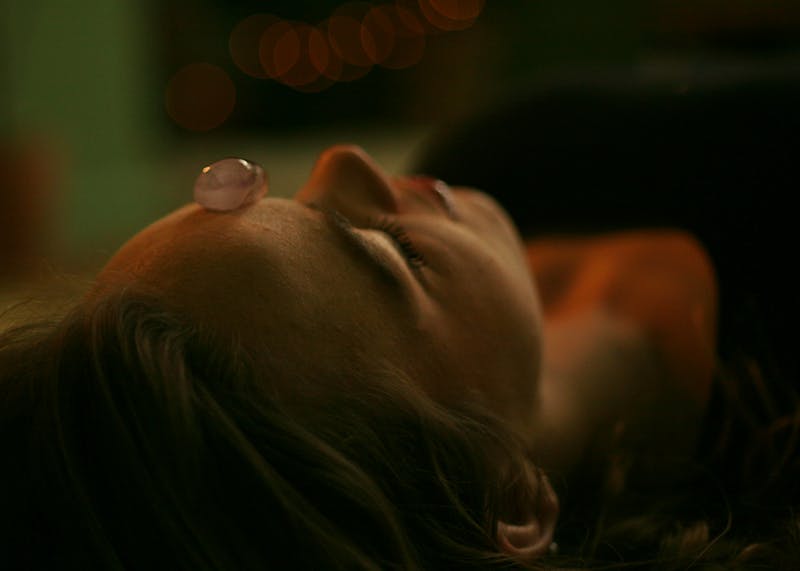After three record-breaking hurricanes hammered America last year, the influential spiritual healer Heather Askinosie wrote a blog post for the Earth. “The recent barrage of megastorms we’ve witnessed has inspired some sobering reflections on the effects we are having on our planet,” she wrote on Mindbodygreen.com, a lifestyle site with millions of followers. “So what can we do to show our love and appreciation for the role that Earth plays in our lives?”
The answer, she wrote, can be found in healing crystals.
Askinosie cited three naturally occurring minerals to help readers “connect to the Earth you’re fighting to protect.” Jasper can “help you gain a broader awareness of your personal impact.” Clear quartz is a “perfect crystal for plotting out new beginnings.” And bloodstone—which is a dark green with red splatters—“helps you to see how essential the fate of the earth is, and take your intention seriously.”
All of these crystals for connecting with the Earth are available to buy on Askinosie’s site, Energy Muse Jewelry, but it’s unclear where exactly on Earth they’re from. A bloodstone listed at $6.50 has no source mentioned. Nor does an $84.88 clear quartz “clarity necklace” or a $17.88 clear quartz touchstone. Ocean jasper is one of the few stones on the site with a specific source listed: Madagascar, the only known place where ocean jasper is found; even then, it’s not clear which mine it came from. But that the country is mentioned makes Askinosie’s site a rarity among popular sellers of healing crystals, which consistently lack information about where and how these spiritual stones are mined.
I tried to track down the sources of crystals sold on popular websites. I found that some were mined in countries with notoriously lax labor and environmental regulations, and some came from large-scale U.S. mines that have contaminated ecosystems and drinking water. The impacts of extracting crystals are admittedly low compared to those of industrial gold, copper, granite, or rare earth mining, but crystals have gone from a new-age fad to a multi-billion dollar industry. And given that crystals can be used to “make a promise to mama earth,” it would seem important to know how they were extracted from mama earth.
“When working with the energy of the earth, it’s important to appreciate the gift we’re being given—and you can’t appreciate that gift if you’re abusing it,” reads the sourcing section on the Energy Muse site. “Those who know how powerful crystal energy is, understand why it is vital to respect where it comes from.”
If it’s so vital, then why is it so hard to figure out?
Crystal sellers don’t want to talk about where their products come from. Goop, actress Gwyneth Paltrow’s lifestyle company, didn’t respond to requests for comment about the eight small healing crystals in its $85 “medicine bag” or its $84 water bottle containing “an obelisk-like amethyst crystal to infuse water with positive energy.” Nor did Utah-based Auramore, a shop that averages about 80 sales per day on Etsy and whose sister company, People Crystals, has a popular store on eBay. Even Askinosie—whose Energy Muse website contains a rare section on “How Our Crystals Are Sourced”—would not comment. (Her publicist cited a busy schedule, and offered to answer a question by email, but declined to respond to it.)
Julie Abouzelof, a former academic writer who owns a crystal business in Hawaii, wasn’t surprised to hear that sellers ignored my inquiries. “Sourcing is a very murky topic within the healing crystal community, for a variety of reasons,” she said. Part of it, she argued, stems from “the deep, psychological construct of the mining industry, where everything is a little bit hidden.”
Not all crystals come from the traditional mining industry. Many stone hunters simply find a spot and start digging. In the U.S., most states have at least one dig-your-own mine when the public can take what they find for a small entrance free. There are also some small private mines for specific minerals, like the Four Peaks Amethyst Mine in Arizona, which requires a helicopter to get there. But these state- and family-owned crystal mines are, for the most part, low-impact operations. One is carbon neutral.

But this isn’t how all healing crystals are extracted. Some come from large-scale industrial mines owned by companies with poor environmental records and a history of labor violations. These mines don’t exist for the purpose of excavating crystals; usually, they’re gold or copper or cobalt mines. But alongside the gold, miners often find seams of jewelry-grade crystals as they excavate huge swaths of land: profitable mining “byproducts.”
Publicly-traded mining companies don’t routinely disclose all of their byproducts, nor to whom they sell these byproducts. Annual reports for shareholders tend to list only the cumulative profits from byproducts. It’s therefore difficult to assess what percentage of the healing crystal market is sourced from industrial mining operations.
It’s not difficult, however, to prove that some crystals come from mines that are decidedly unfriendly to the Earth. For example, this large blue chrysocolla—a “supportive goddess energy stone”—is from the Tyrone Copper Mine, and this $48 pyrite stone to “promote positive thinking” is from the Chino Copper Mine. These are the two largest copper mines in New Mexico, and according to the environmental group Earthworks, they “will generate an estimated 2 billion gallons of acid and metals contaminated seepage every year, requiring water treatment in perpetuity.” The mines have also caused “severe surface and groundwater contamination, and the State of New Mexico and U.S. Department of Justice have filed natural resource damage claims against the company for damages to water and wildlife resources.”

At least these U.S. copper mines are subject to environmental and labor regulations. Industrial mines in many other countries are not. In the Democratic Republic of Congo, for example, children as young as seven work the mines, and cobalt and copper mines in the country’s Katanga region are rich in minerals like tourmaline, amethyst, citrine, blue and smoky quartz—all coveted by healing crystal sellers. The website Minfind.com has dozens of listings of malachite (for “transformation”), cuprite (for “vitality”), and clear quartz (the “master healer”) from the DRC. This listing for a $150 malachite stone from the DRC promotes it as “one of the most important healing stones of the new millennium.” Another DRC-sourced stone is said to promote “wholeness and peace.”
The crystal shops where most online purchasing occurs—like Goop or the myriad sellers on Etsy, eBay, and Amazon—don’t usually list the sources of their stones at all. That’s not always intentional, Abouzelof said. “It’s not like this is some big conspiracy cover up,” she said. “The sellers just don’t always know.”
Most crystal sellers don’t buy directly from mines. They buy from trade shows, like the annual Gem, Mineral and Fossil Showcase in Tucson, Arizona, a two-week-long event that features miners and tumblers—people who smooth and polish rocks—from around the world. During the month of February, Tucson “becomes a playground for the world of international gem and mineral trading, collecting, and treasure hunting,” according to Visit Tucson. Nearly every healing crystal store owner in the U.S. gets their products there, Abouzelof said. “If you’re in the United States, and you own a crystal shop, you go to Tucson,” she said. “If you don’t, that’s super weird.”
People come from outside the U.S., too. “If you’re a mine-owner in Morocco, you’re going to take all your aragonite, stick it on a container ship, put it through customs and onto a flatbed truck, and drive it to Tucson,” she said. Once they’re in Tucson, they need to sell everything. That means, for people like Abouzelof, “I come to Tucson and I’ve only got a couple days. I might buy my entire year’s stock at this show. Everybody’s doing it.” The scene is like a shark-feeding frenzy, she said. “Money moving. Everybody buying. Everybody selling. People-watching like you can’t even believe. You can buy a rock that still has dirt on it, a diamond or a ruby worth a million dollars, even a dinosaur skeleton if you want one.”

Finding nice-looking stones at a low price is priority number one, Abouzelof said. But sourcing can make or break a decision. At last year’s Tucson showcase, she was offered a relatively cheap stock of bright green jade, said to promote self-love. (Goop famously promoted inserting $66 jade eggs into the vagina to increase sexual energy, a claim which nearly broke the internet.) It was beautiful, but it was from Myanmar, where the lucrative jade industry has been deemed a hotbed of environmental corruption—“the biggest natural resource heist in modern history,” according to one report. The New York Times has compared Myanmar jade to blood diamonds, as its extraction has “helped finance a bloody ethnic conflict and unleashed an epidemic of heroin use and H.I.V. infection among the Kachin minority who work the mines.”
Abouzelof turned down the offer. “I had to make that call,” she said. “But you better believe it got sold.”
Healing crystals and stones can change hands several times before they end up at the Tucson showcase—from miner to cutting factory to tumbler to perhaps another seller. There are no international requirements to track these movements, so shop owners often have to trust that their source is telling the truth about where the stone came from. In turn, consumers who buy healing crystals have to trust that the person behind the counter is telling the truth, too.
For instance, the owner of the number-one selling Etsy store in America—California-based JewelersParadise, which also owns the store RockParadise—says she sources directly from mines that she feels are environmentally and ethically sound. “I am aware of where every stone in my warehouse comes from,” Simona Van Vliet said in an email. “Many factories we work with are extremely environmentally conscious. They recycle water used in cutting, they provide proper work environments for their staff and are just wonderful in general.”
But neither she nor Abouzelof (who has a page on her website about sourcing) will disclose the specific mines or factories or tumblers, citing the difficulty of determining their identities. “Imagine if someone who owned a burger joint had to figure out the entire agriculture meatpacking industry, except there’s 1,000 different meats, and nobody’s farm is listed online, and even when you meet the farmer in person, they don’t want to talk to you,” Abouzelof said. The sellers also don’t want to give away trade secrets: It’s not easy to find responsible and affordable sources for crystals, so disclosing such sources would increase competition—and likely drive up the price.
These reasons for keeping mum make sense, but they raise an important question: If shop owners can’t disclose their sourcing without risking business, how can consumers know that their healing crystals didn’t contribute to human trauma or environmental destruction? How can they ensure that the energy the stone purportedly contains has not been compromised by bad ethical vibes?

One answer would be to shift the responsibility of ethical sourcing from the healing shop owner to an independent or government body. The government could regulate the flow of crystals—as it does with diamonds—to ensure only responsibly-mined stones are allowed to enter the country, or it could implement sustainable mining regulations for healing crystals. (Regulations specific to healing crystals currently do not exist anywhere, though Canada, Finland, Argentina, Botswana, Spain and the Philippines have the strongest sustainable mining regulations. Abouzelof suggests looking for crystals from there.) The government or a nonprofit could also develop a certification process for healing crystals, akin to the Fair Trade and Organic labels for food.
Any of these options would require a lot of money and effort, and it’s not clear there’s enough consumer demand for ethical healing crystals. The industry, despite its boom, might not be big enough, and mineral enthusiasts might not care enough.
“[Crystal mining] certainly is not a ‘despoiler of the earth’ activity as some large scale mining operations in foreign countries may be,” Tony Nikischer, president of Excalibur Mineral Corporation, told me in an email. A crystal healer and shop owner named Hibiscus Moon wrote an extensive blog post admitting that, while sometimes crystal mining isn’t very nice, “the very minerals used in our computers and cell phones are the ones we need to concern ourselves with.” A seller named Steve, responding to a buyer’s concern about mistreated miners, wrote that buying crystals “can provide a better standard of living for their people.”
Perhaps most buyers and sellers of healing crystals don’t see a problem with sourcing stones from Myanmar and the Democratic Republic of Congo, or from industrial-scale copper mines in America. But Abouzelof believes that, once consumers start to become aware, that won’t be the case. “There’s a huge battle ahead,” she said. “People are waking up.”
